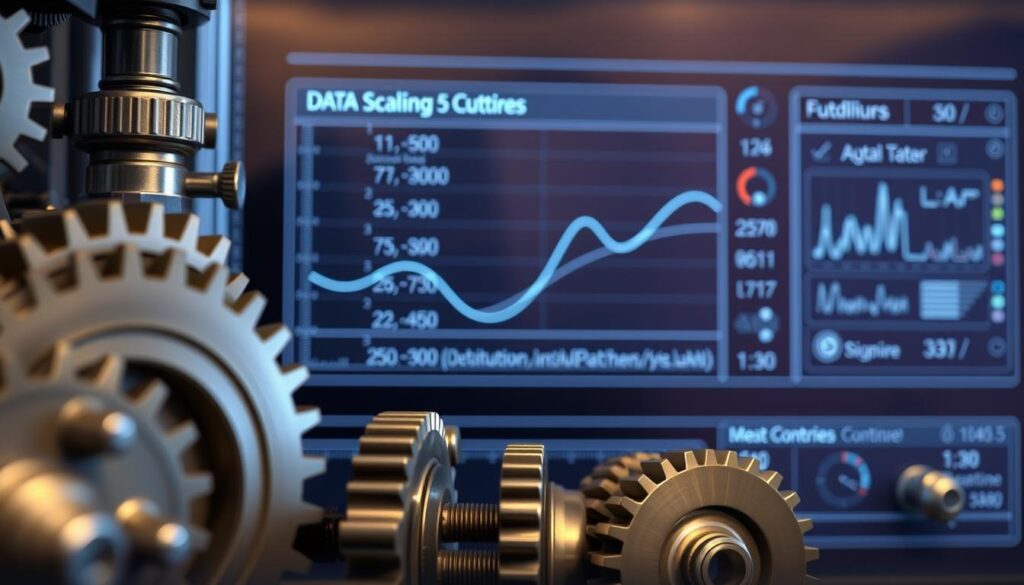Now Reading: Machine Learning Cryptocurrency Price Prediction Models Explained
- 01
Machine Learning Cryptocurrency Price Prediction Models Explained
Machine Learning Cryptocurrency Price Prediction Models Explained

This practical guide compares approaches that forecast the bitcoin price over short horizons. It sets up side-by-side tests of gradient-boosted regressors, statistical baselines like ARIMA, and deep sequence architectures such as CNN-LSTM, GRU, TCN, and LSTNet.
We draw on real work — Hafid et al.’s XGBoost on Binance 15-minute data, Omole & Enke’s Boruta + CNN-LSTM comparisons, and public deep learning repos for tick forecasting — to show what holds up in practice.
Expect a clear view of “performance” beyond accuracy: stability, training speed, interpretability, and whether signals survive realistic backtests that include costs and slippage. The guide highlights short-term forecasts (minutes), contrasts engineered technical features with on-chain signals, and stresses robust preprocessing, scaling, and time-series cross-validation to avoid inflated claims.
Goal: help U.S.-based practitioners pick a model that matches their data, horizon, and execution limits so research leads to real trading outcomes.
Key Takeaways
- Compare gradient boosting, statistical baselines, and deep sequence nets side-by-side for minute-level forecasts.
- Measure performance by accuracy, stability, speed, and real backtest returns.
- Short-horizon setups favor careful scaling and time-aware validation to avoid overfitting.
- Technical indicators and on-chain features each bring different strengths in practice.
- Translate signals to trading only after accounting for costs, slippage, and liquidity limits.
Why the cryptocurrency market’s high volatility demands machine learning
When assets trade 24/7 and liquidity thins, simple statistical assumptions break down quickly in the cryptocurrency market. High volatility and sudden sentiment shifts amplify short-term swings, so adaptive approaches are essential.
Short-interval studies show that 15-minute bars can catch rapid moves that daily aggregates miss. At the same time, 5-minute bars raise microstructure noise, so interval choice matters for usable signals.
Why adaptive methods help: nonstationary dynamics and nonlinear links between order flow, on-chain activity, and headlines defeat linear models. Machine learning can learn subtle patterns in high-frequency data and engineered features, improving short-horizon prediction without heavy hand-tuning.
- Volatile regimes need longer histories and robust scaling to stabilize training.
- Tighter validation and out-of-sample checks reduce regime-specific overfitting.
- Direction forecasts differ from magnitude forecasts; each drives different trade rules.
| Aspect | Short interval (5m) | Moderate interval (15m) | Implication |
|---|---|---|---|
| Noise | High | Moderate | Filter vs. responsiveness |
| Trend capture | Short bursts | Meaningful shifts | Choose by horizon |
| Data needs | More timesteps | Fewer but cleaner | Scaling and leakage control |
User intent and what this comparison covers
This comparison maps practical trade-offs so readers can pick an approach that fits their data, horizon, and deployment limits.
Goal: help U.S.-based practitioners compare approaches for predicting short-interval outcomes and choose models aligned with their objectives.
We cover intra-day horizons (minutes) and both direction classification and regression outputs. That makes the review relevant to scalping, short-hold, and algorithmic strategies.
The data scope contrasts technical indicators from OHLCV with on-chain metrics filtered by feature selection. Comparative evidence includes XGBoost with engineered features versus CNN-LSTM, TCN, and LSTNet using selected blockchain signals.
Benchmarks and evaluation: ARIMA serves as a baseline against tree ensembles and deep sequence nets. Key metrics include direction accuracy, MAE, RMSE, R², stability, computational cost, and interpretability.
| Aspect | Short-horizon use | What we measure |
|---|---|---|
| Outputs | Direction / magnitude | Accuracy, MAE, RMSE |
| Data | OHLCV indicators vs on-chain | Feature selection impact |
| Practical | Latency & costs | Backtest returns, slippage |
This guide is methodological, not financial advice. It explains tooling—scaling choices, time-aware cross-validation, and hyperparameter tuning—so readers can adapt findings to other coins, timeframes, and constrained data access.
Data foundations: technical indicators, on-chain signals, and market context
Clean, well-aligned data and diverse features set the foundation for reliable short-horizon analysis. Core OHLCV-derived indicators like EMA, MACD, RSI, momentum, and the stochastic oscillator summarize trend, momentum, and mean-reversion of the price in compact, interpretable ways.
On-chain signals and network activity
On-chain features include transaction counts, active addresses, and UTXO age distributions. Omole & Enke showed that feature selection (Boruta, GA) plus LightGBM helps manage many blockchain inputs and reduce dimensionality.
Intervals, scaling, and data hygiene
Short bars (5-minute) expose microstructure patterns; 15-minute bars smooth noise and played well in Hafid et al.’s EMA/MACD/RSI study on 15-minute Binance data. Align timestamps, fill or drop missing ticks, and enforce strict time-based splits to avoid leakage.
- Scaling: use StandardScaler for tree inputs and MinMaxScaler for neural nets (the DL repo used MinMax on 5-minute ticks).
- Labeling: choose direction vs magnitude labels to match the intended target.
- Regimes: segment bull, bear, and range-bound phases; feature relevance shifts across regimes.
| Aspect | 5-minute | 15-minute | Scaling |
|---|---|---|---|
| Signal | Microstructure | Smoothed trends | MinMax for NN |
| Data need | High timesteps | Fewer rows | StandardScaler for trees |
| Use case | Tactical tick strategies | Short-hold strategies | Log provenance for reproducibility |
Feature engineering and selection strategies that drive accurate predictions
Good features turn raw tick data into signals that models can use in practice. Start with OHLCV-derived stacks: EMA10, EMA30, and EMA200 to capture short, medium, and long trends.
Compute RSI windows at 14, 30, and 200 for momentum across horizons. Add momentum variants (delta returns, normalized MOM over 5/15/60 bars) and MACD crossovers paired with RSI thresholds to flag persistent moves without leaking future data.
Selection reduces noise. Use Boruta as a wrapper around random forest, a genetic algorithm to search subsets, and LightGBM gain scores to rank and prune features.
- Watch multicollinearity: de-duplicate highly correlated indicators and prefer lagged versions to avoid redundancy.
- Apply L1/L2 for linear or tree regularization; use dropout and weight decay for neural nets.
| Step | Purpose | Practical tip |
|---|---|---|
| EMA/RSi stacks | Trend + momentum | Use vectorized ops and cache results |
| Wrapper / GA / Gain | Prune noisy inputs | Validate subsets with time-aware CV |
| Regularize | Reduce variance | Tune L1/L2 or dropout by cross-val |
Model families at a glance: statistical, machine learning, and deep learning
Start with clear baselines and expand to complex nets only when data and infrastructure allow. This keeps experiments honest and operational risk low.
Baselines: ARIMA as a benchmark
ARIMA is a transparent statistical method. It gives a time-series reference that is easy to interpret. Omole & Enke used it as a check and found it often lags more flexible approaches.
Traditional ML: gradient boosting and random forest
Tree-based methods like XGBoost and random forest handle tabular indicators well. They need less data than deep nets and provide built-in feature importance for quick analysis.
Deep sequence nets and hybrids
Neural networks such as LSTM and GRU capture long dependencies. CNN finds local temporal patterns. Hybrids (CNN-LSTM) and architectures like TCN and LSTNet learn multi-scale signals from sequences.
- Interpretability: trees > deep nets (use SHAP or attention for the latter).
- Data needs: deep nets require more samples and careful scaling.
- Operational: consider inference speed, batch scoring, and latency for live systems.
| Family | Strength | When to use |
|---|---|---|
| Statistical (ARIMA) | Transparent | Quick baseline |
| Tree ensembles | Robust, interpretable | Moderate data, engineered features |
| Deep nets | Sequence power | Large datasets, complex patterns |
Machine learning cryptocurrency price prediction models
A practical lineup runs from fast, interpretable tree ensembles to deeper sequence nets that need more samples and compute.
Regression vs classification: tree regressors like XGBoost often excel at magnitude errors when fed engineered indicators. Sequence hybrids (CNN-LSTM, TCN, LSTNet) shine on direction tasks when paired with on-chain feature selection, as Omole & Enke report.
Data prep differs by family. Trees tolerate unscaled inputs and benefit from lagged indicators. Neural nets need windowing, MinMax scaling, and careful sequence labels. Regularization, early stopping, and time-aware splits reduce overfitting.

Performance patterns in recent studies show XGBoost improving MAE and R² after grid search and regularization (Hafid et al.). Deep sequence nets can outperform ARIMA on direction accuracy when features are pruned with Boruta.
- Resource note: trees run well on CPU; deep nets often require GPU training.
- Interpretability: use SHAP for trees and attention maps for sequence nets.
- Ensembles and stacking can combine strengths across approaches.
| Aspect | Tree ensembles | Sequence nets |
|---|---|---|
| Best use | Engineered indicators, regression | On-chain sequences, direction tasks |
| Preprocessing | Minimal scaling, lag features | Windowing, MinMax, sequence labels |
| Resources | CPU-friendly, fast inference | GPU for training, slower development |
| Study evidence | Hafid et al.: strong MAE/RMSE gains | Omole & Enke: direction gains over ARIMA |
XGBoost with technical indicators vs deep neural networks using on-chain data
This comparison pits an indicator-driven gradient boosting pipeline against sequence nets fed Boruta-pruned on-chain signals. Each path optimizes different goals: magnitude regression or directional accuracy.
XGBoost with EMA/MACD/RSI for Bitcoin closing prices
XGBoost shines on tabular features like EMA, MACD, RSI, and MOM. Hafid et al. used 15‑minute Binance bars, StandardScaler, and heavy tuning to reach low MAE/RMSE and strong R².
CNN-LSTM, TCN, and LSTNet with Boruta-selected on-chain features
Sequence architectures consume windows of selected on-chain inputs. Omole & Enke applied Boruta and GA to trim features, then trained CNN-LSTM to reach 82.44% direction accuracy and robust backtest returns.
When tree ensembles win and when sequence models take the lead
Use tree ensembles when compute is limited, interpretability matters, and technical indicators capture the signal.
Choose sequence nets for high-dimensional on-chain data, direction tasks, and when capturing long/short interactions matters.
| Aspect | Gradient boosting | Sequence nets |
|---|---|---|
| Best metric | R² / MAE / RMSE | Accuracy / precision / recall |
| Operational | Faster training, easier inference | Higher compute, windowing latency |
| When to pick | Small curated feature set, need for explainability | Rich on-chain inputs, direction-focused tasks |
Hybrid suggestion: stack XGBoost regressors with CNN-LSTM logits to blend magnitude and directional strengths.
LSTM, GRU, and CNN compared on short-horizon forecasting
Setup: we use 5-minute ticks with a 256-step input window (~1,280 minutes) and a 16-step output (~80 minutes). This long input span forces choices about memory depth and receptive field.
5-minute ticks, 256-to-16 design implications
A 256-step window gives recurrent nets scope to learn long dependencies but raises compute and state retention needs.
Convolutional networks build receptive fields via stacked kernels. Deep stacks capture wide context without full recurrence, which speeds training.
Recurrent vs convolutional behavior
LSTM often achieved the best test loss here when cells used tanh internally and Leaky ReLU on outputs. It captures longer-term patterns but trains slower.
GRU matched LSTM closely in accuracy while using fewer parameters and faster per-epoch times. It is a good efficiency compromise.
CNN with 1D temporal convolutions trained fastest (~2s/epoch on GPU) and handled local motifs well. It trailed slightly on long-range errors and showed instability in one 4-layer Leaky ReLU run, suggesting depth or stride misconfigurations.
Activation choices and optimization
Leaky ReLU outperformed ReLU in validation and test loss for several convolutional setups. For recurrent cells, tanh in gates plus Leaky ReLU on dense outputs gave stable gradients.
Use MinMax scaling for deep nets, MSE loss for regression, early stopping, and shallow depth sweeps to avoid exploding validation loss.
- Multi-step outputs: prefer direct multi-head outputs or multi-horizon heads over naive recursive rollouts for 16-step forecasts.
- Reproducibility: fix seeds, log learning rates, batch size, and layer configs for fair comparisons.
- When CNN instability appears, re-check kernel sizes, padding, and learning rate.
| Aspect | LSTM | GRU | CNN (1D) |
|---|---|---|---|
| Best trait | Long dependency capture | Parameter efficiency | Fast training / local patterns |
| Typical speed | Slower (more epochs) | Faster than LSTM | ~2s/epoch on GPU |
| Activation tip | tanh + Leaky ReLU outputs | tanh/Gated + Leaky ReLU | Leaky ReLU beats ReLU; watch depth |
| When to pick | Complex long-range signals | Limited compute, similar accuracy | Rapid iteration, local-feature focus |
Takeaway: run architecture sweeps with strict logging. Balance accuracy and latency based on deployment needs and validate anomalies (like a 4-layer CNN spike) before drawing conclusions about bitcoin price forecasts or model selection.
ARIMA vs ML/DL: how much do advanced models really outperform?
ARIMA is quick to fit and transparent, but it rests on linearity and stationarity. That makes it fragile when series jump regimes or show nonlinear drivers common in high-frequency markets.
Comparative studies show practical gains. Omole & Enke report CNN-LSTM, LSTNet, and TCN beating ARIMA on direction accuracy after Boruta feature selection. Hafid et al. found XGBoost outperformed simple baselines on 15-minute bitcoin data for regression metrics like MAE and R².

Still, ARIMA stays valuable as a baseline and sanity check. In very short samples or noisy regimes, its simplicity can rival complex approaches.
Key considerations include overfitting risk, proper time-aware splits, and metric alignment: use accuracy for direction tasks and MAE/RMSE/R² for magnitude tasks. Also weigh operational cost: marginal gains may not justify added complexity in production.
- Use ARIMA to quantify uplift and catch pipeline errors.
- Validate advanced approaches with out-of-sample regime tests and confidence intervals.
- Consider ensembles where ARIMA residuals feed more flexible learners to capture leftover structure.
Timeframe matters: 5-minute vs 15-minute intervals for price and direction
Interval selection changes what a model sees: fast micro-moves or smoothed trends with clearer context. The choice shapes label quality, feature windows, and the trading rules that follow.
Capturing microstructure noise vs meaningful trends
Five-minute bars expose microstructure effects and short-lived patterns. These are useful for rapid response but raise whipsaw risk and noisy labels.
Fifteen-minute bars smooth spikes and yield more stable signals. Hafid et al. used 15-minute bars to balance detail and reliability for bitcoin price work.
Classification for direction vs regression for magnitude
Short-interval setups tend to favor sequence approaches for direction tasks because high-frequency data keeps temporal context intact. Aggregated intervals suit tree-based methods that rely on engineered indicators for magnitude forecasts.
Practical tips:
- Align feature windows to bar length (e.g., EMA5 for 5m, EMA3 for 15m scaled windows).
- Watch class imbalance on longer bars; use calibration or resampling for usable probabilities.
- Match execution latency and costs to the chosen interval to avoid overstated backtest gains.
- Consider multi-resolution: predict at 5 minutes, confirm with a 15-minute trend filter.
| Aspect | 5-minute | 15-minute |
|---|---|---|
| Signal type | Microstructure, high sensitivity | Smoother trends, lower noise |
| Best fit | Sequence nets, high-frequency data | Tree ensembles, engineered indicators |
| Tradeoff | Fast reaction, higher false signals | Slower reaction, better stability |
Finally, revisit interval choices with regime shifts. Market behavior changes, so periodic re-evaluation keeps methods and analysis aligned with real-world performance.
Evaluation metrics that matter: accuracy, MAE, RMSE, R-squared
Good evaluation ties metrics to trading goals. Direction accuracy often maps directly to trade decisions; Omole & Enke report 82.44% direction accuracy with Boruta + CNN-LSTM and link that to profitable backtests.
Direction accuracy and trading relevance
Accuracy measures the hit rate for up/down labels. Calibrate scores and choose thresholds to balance precision and recall so signals translate into cleaner executions.
Error metrics for magnitude forecasts and stability
MAE gives a straightforward average error. RMSE penalizes large misses and is useful in volatile regimes, which Hafid et al. emphasize for XGBoost on 15‑minute data.
- Use R² to report variance explained, but validate across regimes; high R² can be misleading on nonstationary series.
- Track rolling-window MAE/RMSE and hit rate by volatility bucket, time of day, and spread environment.
- Compare to naïve baselines (last price, random direction, ARIMA) and report confidence intervals or bootstrapped error bars.
| Metric | Best use | Trading link | Robustness tip |
|---|---|---|---|
| Accuracy | Direction | Hit rate → signal trades | Calibrate thresholds, ROC analysis |
| MAE | Average magnitude | Expected slippage impact | Report by volatility bucket |
| RMSE | Penalize tails | Large errors hurt returns | Use for risk-weighted loss |
| R² | Variance explained | Model explanatory power | Validate out-of-sample and by regime |
Scaling, preprocessing, and cross-validation done right
Scaling choices and cross-validation steps often decide whether a pipeline generalizes or simply overfits historical quirks.

StandardScaler vs MinMaxScaler
Use StandardScaler (zero mean, unit variance) for tree-based baselines and linear models. Hafid et al. applied it before XGBoost on 15-minute Binance data with grid search and time splits.
Use MinMaxScaler for neural nets with bounded activations (CNN/LSTM/GRU). The DL repo applied MinMax across sequences and trained with MSE loss.
Practical preprocessing and validation
Fit scalers only on training folds to avoid leakage. Clip outliers, forward-fill short gaps, and align windows across features before batching.
Prefer walk-forward or nested time-series cross-validation over random k-fold. For tuning, use grid search or Bayesian optimization plus early stopping and learning-rate schedules.
| Step | Recommended tool | Why it matters |
|---|---|---|
| Scaler | StandardScaler / MinMaxScaler | Stability for trees vs bounded NN activations |
| Missing data | Forward-fill + gap mask | Preserves temporal alignment |
| Validation | Walk-forward / nested CV | Reflects deployment and prevents leakage |
| Tuning | Grid / Bayesian + early stop | Efficient hyperparameter search |
| Governance | Fixed seeds, versioning | Reproducible pipelines and drift detection |
Pro tip: build modular pipelines so you can swap scalers, validators, or tuners without rewriting core logic. Monitor validation metrics for drift and trigger retrains when performance degrades across regimes or exchanges.
From predictions to profits: backtesting strategies and real-world constraints
Turn model outputs into executable rules that map directly to cash flows and risk limits. Backtests must show how signals become trades across long-only, short-only, and long-short approaches.
Strategy design and rule conversion
Long-only: buy when signal > threshold, size positions via fixed fraction, and use a cooldown after exits.
Short-only: mirror entry rules for down signals and confirm borrow availability and funding costs.
Long-short: combine directional logits with position caps; Omole & Enke’s long-and-short method reached very high returns using high direction accuracy, but that result assumed low friction and ideal fills.
Friction, latency, and realistic slippage
Include commissions, bid-ask spread, and slippage models in every run. Add execution latency to simulate missed fills or partial fills.
Pro tip: run sensitivity sweeps: reduce theoretical returns using conservative spread and slippage assumptions to reveal fragile strategies.
Risk controls and sizing
Define maximum drawdown limits, Sharpe/Sortino targets, and minimum hit rates. Use fixed-fraction sizing, volatility targeting, or confidence-weighted leverage.
Implement stop losses and take-profit rules aligned to the forecast horizon. Enforce position limits and graduated cool-downs to prevent rapid re-entry.
Validation and production readiness
Prefer walk-forward backtests with rolling retrains to simulate drift and cadence. Stress test on volatility spikes and out-of-time windows.
Link performance drops to diagnostics: rising feature drift, lower hit rates, or slower fills should trigger alerts and retraining.
| Aspect | Best practice | Impact on returns |
|---|---|---|
| Strategy type | Long-only / Short-only / Long-short rules | Alters exposure and directional bias |
| Friction | Commissions, spread, slippage, latency | Can reduce gross returns by 20–90% |
| Risk metrics | Max drawdown, Sharpe, hit rate | Shows robustness beyond headline returns |
| Position sizing | Fixed fraction, vol target, confidence leverage | Controls tail risk and return volatility |
| Validation | Walk-forward + scenario stress tests | Reflects production performance and drift |
Interpreting model outputs in a live trading workflow
Live systems demand calibrated signals. Convert raw scores into probabilities and map them to trade sizes using confidence bands. Use Platt scaling or isotonic regression for calibration and clip extremes to limit oversized bets.
Explainability matters: tree-based pipelines can expose feature importance directly. For deeper networks, apply SHAP or integrated gradients to link inputs to signals and support trader review.
Stabilize outputs with ensembles and simple averaging to reduce idiosyncratic noise. Run paper trading first, then a phased capital rollout as performance proves robust.
- Monitor hit rate, slippage, and latency on dashboards.
- Set guardrails to pause trading when confidence or market regime drifts.
- Keep human-in-the-loop overrides for outages or extreme spreads.
| Interpretation tool | Best use | Live action |
|---|---|---|
| Calibration (Platt / isotonic) | Convert scores to probabilities | Size orders by confidence band |
| Feature importance / SHAP | Explain drivers | Inform feature fixes and alerts |
| Ensemble voting | Stabilize signals | Smooth position entry/exit |
| Monitoring & logging | Detect drift and failures | Trigger retrain or disable trading |
Governance: log inputs, outputs, and fills for every trade. Alert on sudden drops in accuracy or spikes in error metrics. Schedule regular retraining and governance reviews to keep systems aligned with data and risk limits.
Generalizing beyond Bitcoin: extending models to other cryptocurrencies
Different tokens behave like distinct assets; models must adapt to gaps in depth, activity, and on-chain semantics. Practical transfer asks for fresh validation and tuned risk limits before deploying a pipeline built for bitcoin to another chain.

Liquidity, regime shifts, and domain adaptation
Start by checking liquidity and spreads. Many altcoins have wider spreads and thin depth, which changes fills and slippage assumptions.
Relearn feature importances per asset. On-chain metrics that mattered for one chain may be absent or shaped differently on another.
Data, transfer learning, and operational notes
Ensure reliable OHLCV and on-chain feeds across exchanges. Missing or inconsistent data ruins backtests and live signals.
- Transfer learning: reuse weights or hyperparameters as a warm start, then fine-tune per asset.
- Account for regime links: many altcoins show beta to bitcoin; residuals can carry cross-asset signals.
- Recalibrate sizing and risk: smaller caps need tighter position limits and volatility targets.
| Aspect | Action | Why it matters |
|---|---|---|
| Liquidity | Simulate spreads, depth | Affects fills and realistic returns |
| Data | Validate feeds, align timestamps | Prevents leakage and bad labels |
| Portfolio | Ensemble asset-specific models | Captures correlations and allocates capital |
Final note: evaluate each token with asset-specific baselines, comparable timeframes, and cost assumptions. That disciplined analysis preserves out-of-sample performance and keeps operational risk in check.
What features move the needle: sentiment, macro, and hybrid inputs
Blending fast social signals with slower on-chain and macro proxies gives a more stable signal set for short horizons.
Sentiment sources include Twitter, Reddit, news feeds, and Google Trends. They react quickly but carry bot noise, API limits, and sampling bias. Vet sources, filter bots, and test multiple dictionaries to check robustness.
Macro proxies—risk appetite, dollar liquidity, and equity vols—add context. These slower-moving indicators help explain regime shifts and complement technical stacks when liquidity or risk sentiment changes.
Hybrid inputs pair fast technical features (EMA, order-book imbalance, funding rates) with on-chain adoption metrics. Use Boruta, genetic search, or LightGBM gain to trim high-dimensional sets and reduce overfitting.
- Align timestamps: shift macro and sentiment series to avoid lookahead bias against microstructure.
- Test robustness: vary sentiment lexicons and hyperparameters to confirm stable signals.
- Explore interactions: sentiment regimes x on-chain activity often show non-additive effects on short moves.
| Input Type | Example | Why it helps |
|---|---|---|
| Sentiment | Twitter score, news volume | Fast signal, crowded-sentiment risk |
| Macro | Dollar liquidity, VIX | Regime context, risk appetite |
| Microstructure | Funding, order-book imbalance | Execution and short-term flow |
Validate across bull/bear cycles and prioritize explainability so traders can link selected features to intuitive market moves and trust live decisions.
Reproducibility and implementation notes for practitioners
Reproducible pipelines make research useful in production. Start by locking data snapshots, package versions, and environment configs so runs can be rerun and audited later.
Data sourcing via exchange APIs and pipeline versioning
Collect candles and trades with robust API clients that handle rate limits, retries, and incremental syncs. Validate schemas: timestamp, open/high/low/close/volume must be present and consistent across exchanges.
Practical checklist:
- Retry logic, backoff, and request throttling to avoid dropped fetches.
- Schema validation and checksum tests for each ingest step.
- Snapshot raw data daily and store immutable copies for audits.
- Lock package versions (requirements.txt or conda) and containerize training/inference.
Regularization and monitoring to prevent model drift
Use penalties, dropout, and early stopping during training to reduce overfitting. Log validation curves and saved checkpoints so you can compare runs and visualize regularization effects, as in the DL repo notebooks.
Set up continuous monitoring for metric degradation and input distribution shifts. Trigger alerts when performance or data statistics cross thresholds and automate a governance workflow for retrain or rollback.
| Area | Recommendation | Why it matters |
|---|---|---|
| Experiment tracking | Log hyperparameters, metrics, and artifacts | Reproducible analysis and peer review |
| Security | Secure key management, least-privilege | Protect exchange access and data |
| Testing | Unit/integration tests for transforms & endpoints | Prevents silent runtime errors |
| Resilience | Fallbacks and circuit breakers | Maintain safe behavior on exchange outages |
Governance tip: establish a retrain cadence, approve updates via a review board, and keep a rollback path. Document feature computation (EMA windows, RSI params) so peer reviewers can reproduce the study and analysis exactly.
Key takeaways for choosing the right prediction model today
Key takeaway, pick a pipeline that balances signal quality, training cost, and live latency.
Start simple: if your feed is mostly technical indicators, begin with a learning model like gradient boosting and verify returns on walk-forward tests. Hafid et al.’s XGBoost setup is a good reference for this path.
For rich on-chain inputs and direction tasks, prioritize deep learning after strict feature selection; Omole & Enke’s Boruta + CNN-LSTM shows how higher accuracy can translate to stronger backtests.
Match interval to execution, choose metrics tied to trading goals, and enforce strict preprocessing, time-aware validation, and monitoring. Make incremental changes, test rigorously, and only add complexity when it improves real, net returns.














